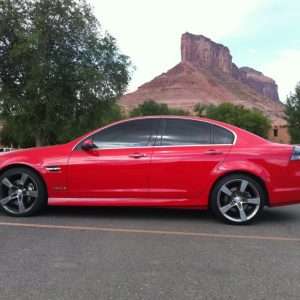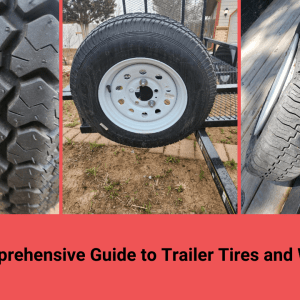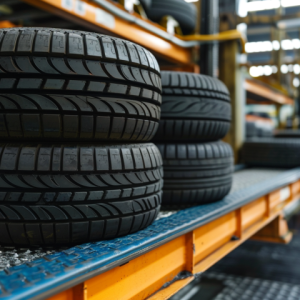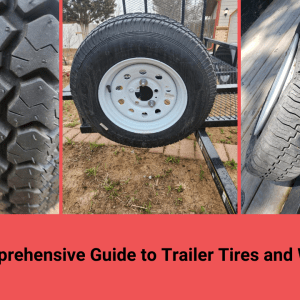Determining if new wheels and tires will fit your car can seem daunting. It’s crucial to get it right to avoid rubbing, handling issues, or even damage to your vehicle. This guide will break down the key factors involved. We’ll cover everything from bolt patterns to offset. Let’s dive in!
Key Factors to Consider
Several factors play a role in determining proper wheel and tire fitment. Ignoring even one can lead to problems. Here’s a breakdown:
- Bolt Pattern: This is the number and spacing of the wheel studs. It MUST match your car’s hub.
- Wheel Diameter and Width: These dimensions affect tire size options and overall appearance. Too wide, and they’ll rub.
- Offset: This is the distance between the wheel’s mounting surface and its centerline. Incorrect offset can cause rubbing or suspension issues.
- Tire Size: The tire’s diameter and width must be compatible with the wheel and your car’s fender clearance.
- Center Bore: The diameter of the center hole in the wheel. It should match the hub diameter of your car.
It is very important to check all of these factors. A small error can lead to big problems.
FAQ: Will These Wheels and Tires Fit My Car?
Q: How do I find my car’s bolt pattern?
You can find your car’s bolt pattern in your owner’s manual, online databases, or by measuring it yourself. Many tire shops can also help you determine this.
Q: What happens if the wheel offset is wrong?
An incorrect offset can cause the wheel to rub against the suspension components or the fender. It can also negatively affect handling and steering.
Q: Can I use wheel spacers to correct offset issues?
Wheel spacers can be used to adjust offset, but they should be used with caution. Ensure they are high-quality and properly installed. They can also put extra stress on wheel bearings.
Q: What is tire rubbing, and how do I prevent it?
Tire rubbing occurs when the tire comes into contact with the fender or suspension components. To prevent it, choose the correct tire size and wheel offset. You may also need to roll your fenders.
Q: Where can I find reliable information about wheel and tire fitment?
There are many online resources and forums dedicated to wheel and tire fitment. Reputable tire retailers also offer fitment guides and tools.
Tools and Resources
Several online tools and resources can help you determine wheel and tire fitment. These include:
- Online wheel and tire size calculators
- Fitment guides from tire manufacturers
- Online forums and communities
These resources can help you visualize how different wheel and tire combinations will look on your car. They can also help you identify potential fitment issues.
Test Fitting and Final Checks
Even after careful calculations, a test fit is highly recommended. This involves temporarily mounting the wheels and tires to your car to check for any rubbing or clearance issues. It’s a crucial step before committing to a purchase. A short drive around the block can reveal problems you might not see while stationary.
Checking for Rubbing
Turn the steering wheel lock-to-lock and inspect the inner and outer fender wells; Look for any signs of contact between the tire and the fender liner, suspension components, or brake lines. Listen for any unusual noises while turning.
Suspension Clearance
Ensure there is adequate clearance between the tire and the suspension components, especially the struts or shocks. Insufficient clearance can lead to damage and affect handling.
Brake Clearance
Verify that the wheels clear the brake calipers. Some wheels may require spacers to provide adequate brake clearance, especially on cars with larger brake systems.
Consequences of Incorrect Fitment
Using wheels and tires that don’t fit properly can have serious consequences. These include:
- Reduced Handling and Performance: Incorrect offset or tire size can negatively affect steering response and overall handling.
- Tire Wear: Rubbing can cause premature tire wear and damage.
- Suspension Damage: Contact with suspension components can lead to damage and costly repairs.
- Safety Hazards: In extreme cases, incorrect fitment can lead to wheel failure or loss of control.
It’s simply not worth the risk. Take the time to ensure proper fitment.
Aesthetic Considerations
While proper fitment is essential for safety and performance, aesthetics also play a role in choosing wheels and tires. Consider the overall look you’re trying to achieve. Do you want a sporty, aggressive stance or a more subtle, refined appearance? The right wheels and tires can dramatically enhance the look of your car.
Wheel Style
Choose a wheel style that complements your car’s design. Consider factors such as spoke design, finish, and color.
Tire Sidewall Profile
The tire’s sidewall profile can also affect the overall look. A lower profile tire will give a sportier appearance, while a taller profile tire will provide a more comfortable ride.
Ultimately, the best wheels and tires are those that fit properly, enhance performance, and complement your car’s style. Take your time, do your research, and consult with professionals to make the right choice. Happy driving!
Understanding Wheel and Tire Specifications
Before diving into fitment, it’s crucial to understand the key specifications of wheels and tires. Knowing these terms will help you make informed decisions and communicate effectively with tire professionals. Let’s break down the essential elements.
Wheel Specifications
- Bolt Pattern: The number and spacing of the wheel’s bolt holes, which must mat
- Diameter: The wheel’s diameter in inches.
- Width: The wheel’s width in inches, measured between the inner flanges.
- Offset: The distance between the wheel’s mounting surface and its centerline. A positive offset means the mounting surface is closer to the outside of the wheel, while a negative offset means it’s closer to the inside.
- Center Bore: The diameter of the hole in the center of the wheel. It should match the hub diameter of your car.
Tire Specifications
- Tire Size: A series of numbers and letters that indicate the tire’s width, aspect ratio, and diameter (e.g., 225/45R17).
- Load Index: A numerical code that indicates the maximum weight the tire can carry.
- Speed Rating: A letter code that indicates the maximum speed the tire is designed to handle.
Understanding these specifications is the first step in ensuring proper wheel and tire fitment. A little knowledge goes a long way!
The Importance of Professional Installation
Even if you’ve carefully researched and selected the correct wheels and tires, professional installation is highly recommended. Trained technicians have the expertise and equipment to ensure proper mounting, balancing, and torqueing of the wheels. This is crucial for safety and performance.
Proper Mounting
Incorrect mounting can damage the tires and wheels. Professionals use specialized equipment to ensure the tires are properly seated on the wheels.
Wheel Balancing
Unbalanced wheels can cause vibrations and uneven tire wear. Professionals use balancing machines to distribute weight evenly around the wheel.
Torqueing Lug Nuts
Properly torqueing the lug nuts is essential to prevent the wheels from coming loose. Professionals use torque wrenches to tighten the lug nuts to the manufacturer’s specifications.





